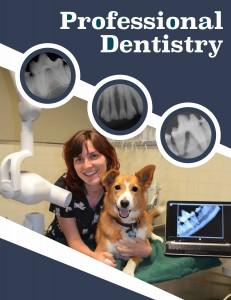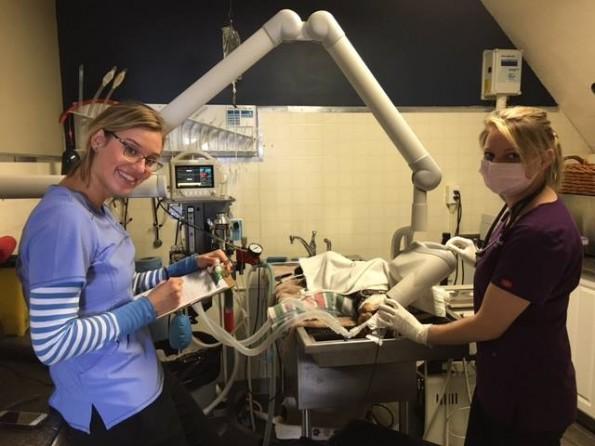Without proper dental care, 80% of dogs and
70% of cats show signs of oral disease by age three 
Bad breath in a dog is often dismissed simply as “doggy breath.” In fact, it may signal periodontal disease, which is the most common ailment suffered by dogs and cats over 3 years old. Preventing periodontal disease can result in longer, healthier lives for pets.
Unfortunately, dental care is often ignored by owners. One survey notes that just 1 out of 10 owners makes sure their pets’ teeth are cared for. Although dogs and cats rarely get cavities, the plaque and tartar that do form can cause gingivitis and periodontal disease. This can lead to tooth decay, bleeding gums and tooth loss. The bacteria that causes all this can travel through the bloodstream and eventually damage the major organs.
It is important to begin a home dental program. This is easier done when your pet is very young, so he or she is used to brushing.
Nutritional supplements and specially formulated foods designed to remove buildup are also effective. Look for the “Seal of Acceptance of the Veterinary Oral Health Council” on foods to determine if they meet the defined standards for plaque and tartar control.
Three Steps to Success
STEP 1: Take your pet to the veterinarian for a dental Exam. Don’t wait for their annual check-up if you suspect a problem.
STEP 2: Begin a dental care regimen at home. Our veterinarians can suggest steps that may include brushing your pet’s teeth. One of the most convenient and effective ways to combat oral disease is feeding specially formulated foods proven effective in combating plaque and tartar buildup.
STEP 3: Schedule regular veterinary check-ups. These are essential in helping our veterinarian monitor the progress of your pet’s dental health routine. Our veterinary health care team can help you schedule the appropriate visits.
To learn more on how you can start to clean your pet’s teeth at home, we suggest reading Dr. Brendon Laing’s article on Let the ‘Tooth’ be told.
For those that prefer a visual demonstration, Virbac Animal Health has a great video on proper tooth cleaning.
Are antlers a good chew toy?
In the video below, Drs Brian & Brendon Laing demonstrate why an antler is not a good choice for a chew toy for your dog. Antlers are harder than your dog’s teeth so when a dog bites down on an antler the tooth is just as likely to fracture as the antler. Many dog’s teeth are broken while chewing bones. Look at the difference between when a bone and an antler are hit with a sledge hammer.

